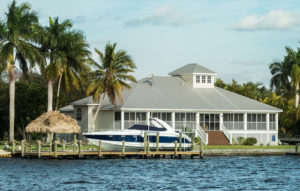How to Sell a Home in a Flood-Prone Area

Selling a home in a flood prone area can be extremely difficult.
Selling a home can always be a challenge, but selling a home in a flood prone neighborhood can be extremely difficult. If your home is located in a designated flood zone you may find buyers are less willing to make an offer or will offer well under your asking price.
Below is a list of the top 8 cities most vulnerable to storm surge flooding:
If you are trying to sell home in a flood prone neighborhood here are a few tips that can help you get a full price offer and sell your home quickly.
Understand Which Flood Zone Your Home Is In
One of the most important things when selling a home in a flood prone area is full disclosure. You must make any buyer aware of the flood zone designation. It is also important that you understand the various flood zone ratings. Here is a quick overview of the most common flood zone designations.
- Moderate to Low Risk Areas
In these areas, flood insurance is available from the National Flood Insurance Program (NFIP). However, flood insurance is not required for low to moderate risk properties. It should be noted that most lenders would require a flood insurance policy in these areas.B and X Shaded Rating: These are considered moderate flood hazards areas. In most cases these areas are protected by levees or are prone to shallow flooding.C and X Unshaded: These areas are considered low risk when it comes to flooding and are rated above the 500 year flood level. - High Risk Areas
In these areas flood insurance is a requirement and is available from the NFIP.“A” Rating: Any rating that starts with an “A” is considered a high-risk flood property. The various ratings indicate the likelihood and severity of flooding. “A” ratings consist of the following: AE, A1, AH, AO, AR, A99. - High Risk Coastal Areas If your home is located in a coastal area it will be given a “V” rating and flood insurance is required and available from the NFIP.V Ratings: These rating are reserved for coastal homes and flood insurance is required. The following ratings compromise the “V” rating group: V, VE, and V1-30.
Upgrade Your Home
There are a number of upgrades you make to both the interior and exterior of your home that will increase its flood defenses. Here are just a few items you should consider upgrading before putting your home on the market:
- Electrical: Flooding can cause serious damage to your electrical systems. Raise switches, sockets, and circuit breakers and all wiring a foot above any expected flood levels that affect your home.
- Outdoor Equipment: Mechanicals that are located outside should be raised and anchored. Air-conditioning units, generators and any fuel tanks such as propane should be raised above flood levels and anchored to prevent them from breaking loose in floodwaters.
- Sewage System: A frequent problem with flooding is sewage backing up into your home. Having back flow valves installed will help prevent this issue. Have a plumber inspect your entire sewage system and make sure it’s flood proof.
- Interior Mechanicals: Any indoor mechanicals should also be raised above flood levels and anchored. This includes furnaces, water heaters and any other expensive to replace mechanicals.
- Major Upgrades: Major upgrades to your home include raising it up on peers or columns above flood level. This can be very expensive but will certainly help sell your home. You can also wet proof your home by installing vents in the foundation, this is also a fairly expensive upgrade.
Many of these upgrades may be difficult to see so it is important to point out the various upgrades you have made to potential buyers and include them in your home selling brochures and real estate listing.
Landscaping Can Help Prevent Flooding
Landscaping is important and is often the first thing a prospective buyer will see when looking at your home. In addition, landscaping can help prevent flooding. Consider modifying the slope of your yard to help stop floodwaters and prevent them from reaching your home.
In most cases a professional should do this type of work. If your yard has recently been flooded, any in-ground sprinkler systems should be inspected and flushed out to get rid of any contaminants that have made their way into the system.
Price it Right
A standard homeowners policy offers zero protection against flood damage so if your home is located in a flood prone area any potential buyers will have to carry an additional flood policy.
Depending on the location of your home, flood insurance can be extremely expensive and should be taken into consideration when pricing your home. The added expense of a flood policy may be the deciding factor between your home and another so factor that cost into your price.
If your home is in one of the states below, you should look into getting flood insurance protection. The list of states below include the top 10 states most at risk of flooding.
Get flood insurance quotes for your home if you are not already carrying one. While pricing will vary from home to home, you can use our online quoting service for multiple properties so we can help you compare home and flood insurance rates for your new home purchase.
